2,2-BIS(2-HYDROXY-5-BIPHENYLYL)PROPANE
Synonym(s):2,2-{5,5′-Bis[1,1′-(biphenyl)-2-ol]}propane;2,2-Bis(2-hydroxy-5-biphenylyl)propane;2,2-Bis(4-hydroxy-3-phenylphenyl)propane;5,5′-(1-Methylethylidene)bis[(1,1′-biphenyl)-2-ol];5,5′-Isopropylidenedi-2-biphenylol
- CAS NO.:24038-68-4
- Empirical Formula: C27H24O2
- Molecular Weight: 380.48
- MDL number: MFCD00272620
- SAFETY DATA SHEET (SDS)
- Update Date: 2024-11-17 08:48:38
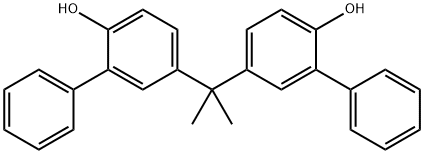
What is 2,2-BIS(2-HYDROXY-5-BIPHENYLYL)PROPANE?
The Uses of 2,2-BIS(2-HYDROXY-5-BIPHENYLYL)PROPANE
5,5''''-(Propane-2,2-diyl)bis(([1,1''-biphenyl]-2-ol)) was characterized in a biological study of bisphenol analogs in consumer products and their exposure in children.
Properties of 2,2-BIS(2-HYDROXY-5-BIPHENYLYL)PROPANE
| Melting point: | 98-99 °C |
| Boiling point: | 567.4±50.0 °C(Predicted) |
| Density | 1.152 |
| storage temp. | Sealed in dry,Room Temperature |
| solubility | DMSO (Slightly), Methanol (Slightly) |
| form | Solid |
| pka | 10.15±0.10(Predicted) |
| color | White to Off-White |
Safety information for 2,2-BIS(2-HYDROXY-5-BIPHENYLYL)PROPANE
| Signal word | Warning |
| Pictogram(s) |
 Exclamation Mark Irritant GHS07  Health Hazard GHS08 |
| GHS Hazard Statements |
H315:Skin corrosion/irritation H317:Sensitisation, Skin H319:Serious eye damage/eye irritation H361:Reproductive toxicity |
| Precautionary Statement Codes |
P201:Obtain special instructions before use. P280:Wear protective gloves/protective clothing/eye protection/face protection. P302+P352:IF ON SKIN: wash with plenty of soap and water. P305+P351+P338:IF IN EYES: Rinse cautiously with water for several minutes. Remove contact lenses, if present and easy to do. Continuerinsing. P308+P313:IF exposed or concerned: Get medical advice/attention. |
Computed Descriptors for 2,2-BIS(2-HYDROXY-5-BIPHENYLYL)PROPANE
New Products
4-AMINO-TETRAHYDRO-PYRAN-4-CARBOXYLIC ACID HCL 4-Aminotetrahydropyran-4-carbonitrile Hydrochloride (R)-3-Aminobutanenitrile Hydrochloride 3-((Dimethylamino)methyl)-5-methylhexan-2-one oxalate 1,4-Dioxa-8-azaspiro[4.5]decane 5-Bromo-2-nitropyridine 4-(Dimethylamino)tetrahydro-2H-pyran-4-carbonitrile Diclofenac Potassium Ornidazole IP Diclofenac Sodium IP/BP/EP/USP Mefenamic Acid IP/BP/EP/USP Aceclofenac IP/BP/EP Nimesulide BP SODIUM AAS SOLUTION ZINC AAS SOLUTION BUFFER SOLUTION PH 10.0(BORATE) GOOCH CRUCIBLE SINTERED AQUANIL 5 BERYLLIUM AAS SOLUTION SODIUM METHYL PARABEN Methylcobalamin (vitamin B12) SODIUM VALPROATE LAMOTRIGINE RacecadotrilRelated products of tetrahydrofuran
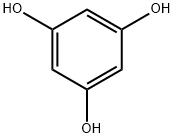
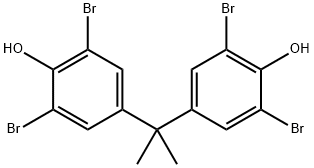

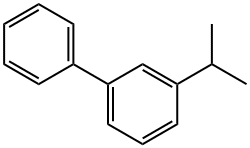
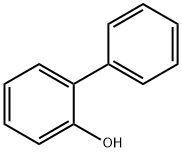
You may like
-
 2,2-Bis(2-hydroxy-5-biphenylyl)propane CAS 24038-68-4View Details
2,2-Bis(2-hydroxy-5-biphenylyl)propane CAS 24038-68-4View Details
24038-68-4 -
 Bisphenol PH 99% (GC CAS 24038-68-4View Details
Bisphenol PH 99% (GC CAS 24038-68-4View Details
24038-68-4 -
 89796-99-6 Aceclofenac IP/BP/EP 98%View Details
89796-99-6 Aceclofenac IP/BP/EP 98%View Details
89796-99-6 -
 61-68-7 98%View Details
61-68-7 98%View Details
61-68-7 -
 Diclofenac Sodium IP/BP/EP/USP 98%View Details
Diclofenac Sodium IP/BP/EP/USP 98%View Details
15307-79-6 -
 Ornidazole IP 16773-42-5 98%View Details
Ornidazole IP 16773-42-5 98%View Details
16773-42-5 -
 51803-78-2 Nimesulide BP 98%View Details
51803-78-2 Nimesulide BP 98%View Details
51803-78-2 -
 15307-81-0 98%View Details
15307-81-0 98%View Details
15307-81-0
Statement: All products displayed on this website are only used for non medical purposes such as industrial applications or scientific research, and cannot be used for clinical diagnosis or treatment of humans or animals. They are not medicinal or edible.